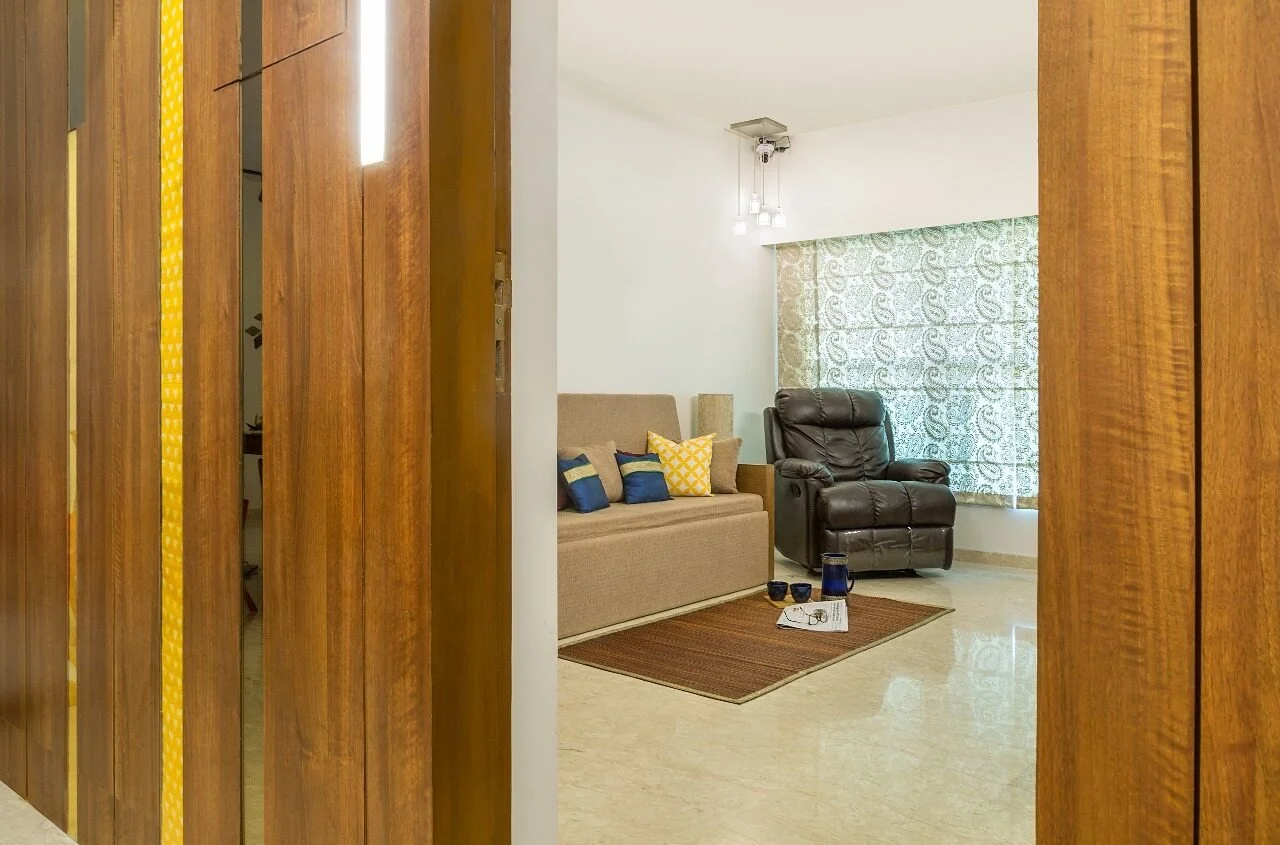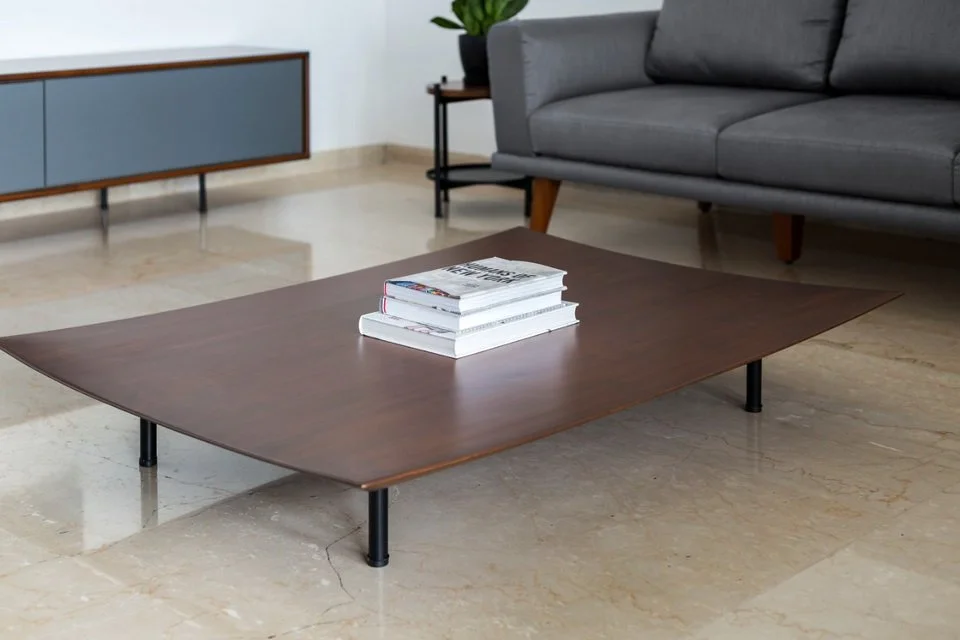The wood may fracture, dry, swell (due to moisture exposure), and even decay if it is not finished correctly. This is where wooden furniture finishes step in for help. Although the primary purpose of each form of wood finish is to add a protective coating, it can also aid in the improvement of the wood's aesthetic appeal.
Specialists always recommend finishing whether the wood is old or fresh. As a result, applying a wood finish is one of the most important steps you can take to protect your expensive furniture. However, it usually adds a significant amount to the cost of wood furniture.
Let’s walk you through several types of furniture finishes, how to maintain them, and other pertinent information in this article.
Types of Furniture Finishes for your Mumbai Home
It is critical to select the appropriate types of furniture finishes for your needs. Here are six furniture finishes that can turn an ordinary piece of furniture into something truly royal.
1. Tung oil
Tung oil is one of the most prevalent penetrating finishes, made from the tung tree's nuts or seeds. As the term sounds, Penetrating coatings penetrate the pores and fibres of wood to create a stunning ornamental surface.
Penetrating coatings have a lower gloss than surface finishes and take longer to dry. The majority are oil-based, with Tung oil and linseed oil being the most prevalent. It is an environmentally beneficial and relatively safe wood treatment when thoroughly dried.
Some features of Tung oil as furniture finish are:
Brings out the inherent beauty of the wood skin and gives it a warm glow.
Ideal for usage in decks and flooring of boats.
Has a matte or light, silky finish with a little golden tinge.
It can be applied with a cloth or brush.
2. Danish Oil
It's a blend of oil, varnish, and thinner (typically boiled linseed or tung oil). Danish oil protects wood surfaces better than regular oil finishes. In addition, it’s simple to use and reasonably long-lasting.
Some apparent features of Danish oil are:
Danish oil gives a more natural look on the surface it is applied.
Ideal for glossy or matte-looking furniture.
Has excellent waterproofing.
Dries extremely fast.
Non-toxic, so won’t harm kids and pets.
Very easy to apply.
3. Shellac
Shellac is one of the most popular types of furniture finishes. This type of wood finish is particularly appealing on walnut, exquisite veneer, and mahogany objects. It is, however, not long-lasting and dissolves in water and solvents such as alcohol.
Some apparent features of Shellac are:
It gives a delicate, mellow finish highlighting the wood's original grain.
Great choices for outdoor furniture and artefacts.
The Colour ranges from very blonde to deep orange.
Brushing can be difficult, so you'll need clog spray tools, but you can use a faux badger hairbrush instead.
Resistant to scratches.
4. Lacquer wood finish
Lacquer is a mixture of several gleaming wood treatments. Lacquer wood finishes are based on shellac, nitrocellulose, and urushiol, for example, are available. Solvent evaporation is usually used in the drying process, resulting in a hard and lasting finish.
Some apparent features of lacquer wood finish are:
Gives a dull, medium, and high-gloss finish.
Excellent choice for cabinets, doors, and shelves made of wood.
It looks transparent with a silky sheen on whatever surface is applied.
It can be applied with a natural bristle brush or sprayed on in a dust-free environment.
Impervious to water and other liquids.
Extremely rugged, no maintenance required.
It dulls with age or gets yellow or cloudy.
5. Varnish
Varnish is another type of furniture finishes widely used in India, and many homeowners in Mumbai also prefer it because of its low-price range and easy availability.
It's a transparent and clear wood finish made of drying oil, resin, and thinner or solventAUnfortunately, it a range of varnish wood treatments are available, including lacquer, alkyd, polyurethane, acrylic, shellac, and resins.
Here are some apparent features of using varnishes as wood finishes:
Gives a glossy to high-glossy appearance.
Ideal for floors, cupboards, and furniture.
Highly durable and protects from regular abrasions and scratches.
Acts as a waterproofing agent for the wood.
Protects expensive woods from damage from mundane accidents like spills and drops.
Make it easier to clean the surface and protect against stains.
6. Wax
Carnauba is usually the main ingredient in wax-based wood finishes. However, nowadays, practically any wax can be used to create a wax finish. Wax furniture finishes are simple to apply and resist abrasion. However, it is not long-lasting and must be reapplied frequently.
Some apparent features of wax as a furniture finish are:
It can be applied directly to the wooden surface.
It can be used with other protective wood finishes for added protection.
Ideal for flooring and furnishings.
Offers good moisture resistance and immunity to scratches.
Colours range from matte to satin.
How to Maintain the Furniture Finish Once you are Done with It?
Here are a few helpful hints to help you better maintain your furniture.
1. Make dusting a habit: a gleaming piece of furniture creates a glistening environment. And the correct amount of dusting can help with that. To remove any dust, be sure to use a soft, dry cotton cloth. Also, there’s nothing like cleaning your sofas, tables, and other furniture on a bi-monthly basis.
2. Don't expose to direct sunlight: avoid exposing wooden furniture to direct sunlight for long periods. Bright and dark spots could form over the cross-section of the sun and shadow, resulting in a phenomenon known as ‘spotting.'
3. Keep extreme heat and cold away: to keep your hardwood furniture in good shape, avoid putting anything extremely hot or cold substances in contact with them. These substances tend to leave an impression on the surface that may affect the original texture.
4. Let it age gracefully: furniture ages with time, and you should allow it to do so gracefully. It, like wine, may develop a new personality in its later years. With time, some wood will lighten, and some will darken. The idea is to let it be without trying to hide those ageing.
5. Keep sharp objects at bay: sharp things should never be allowed to come too close to hardwood furniture pieces. A scrape is never appealing. Never!
6. Opt for oiling and waxing: oiling and waxing wood is generally recommended since it provides a lustrous finish. It also imparts a protective layer, a coating, to the surface, giving it a more vibrant appearance. It would be fantastic to oil and polish your wooden units every three months.
These are some helpful tips for keeping your wooden furniture in good shape and condition for years. Choose a wood treatment that meets your specific demand, type of wood, and colour now that you better understand the numerous types of furniture finishes and their apparent benefits.
Hipcouch offers top-of-the-line interior design services delivered by experts. So if you’re looking for expert advice before deciding which furniture finishes to opt for, our experts are just a call away. Get in touch for a consultation today!



